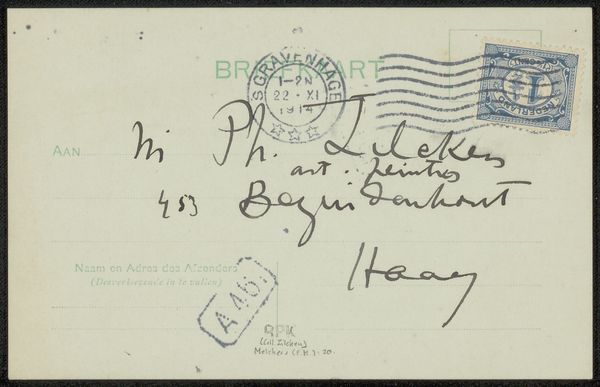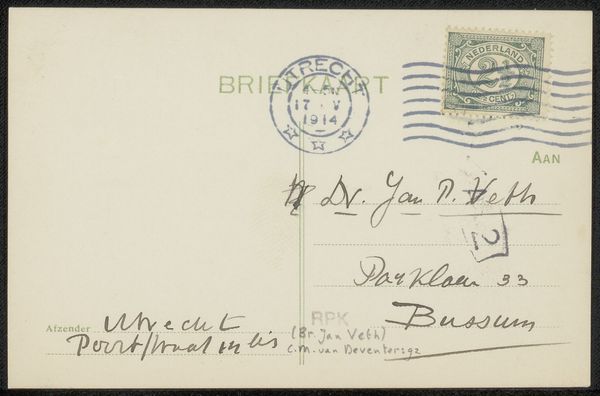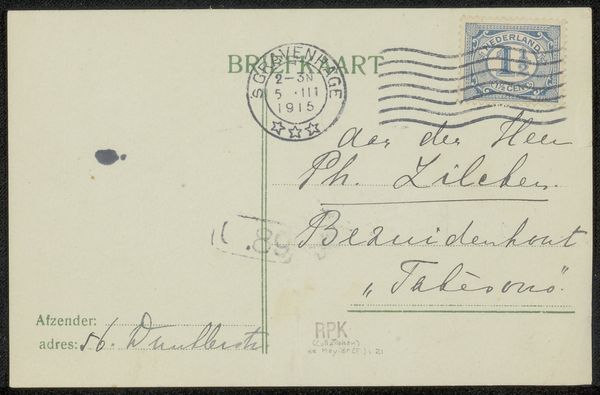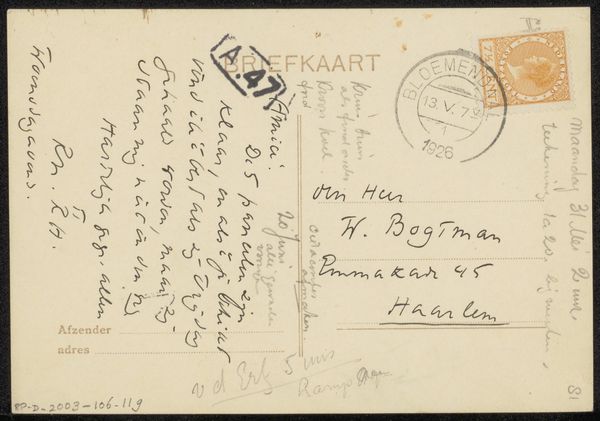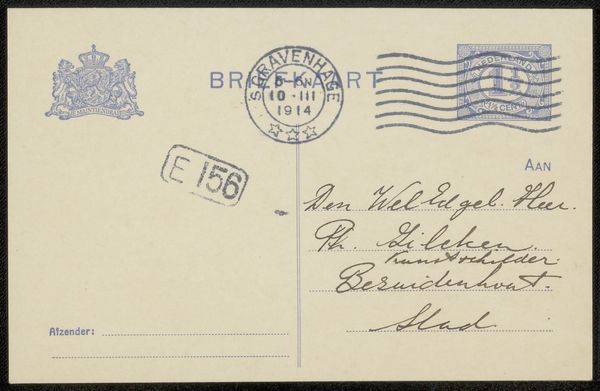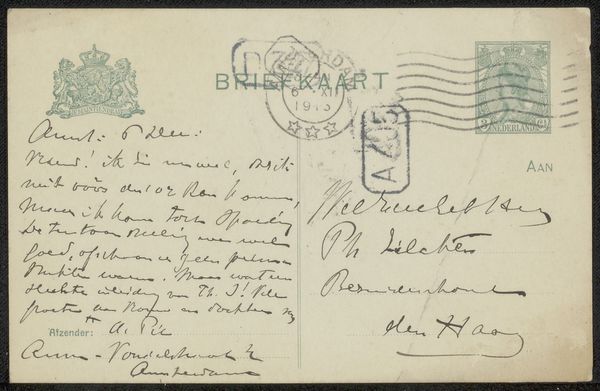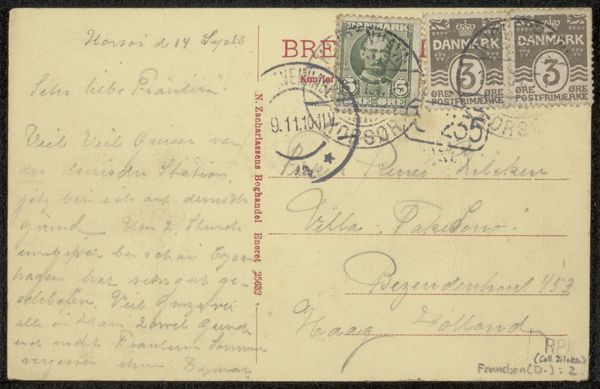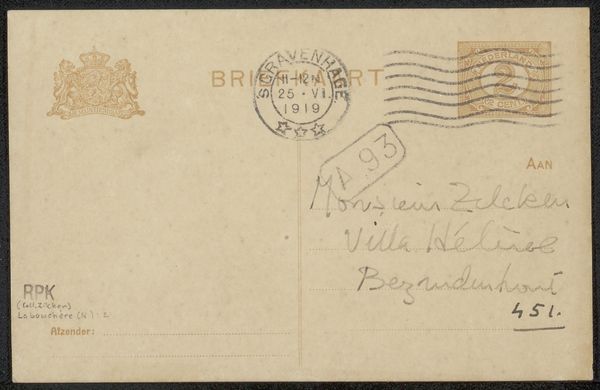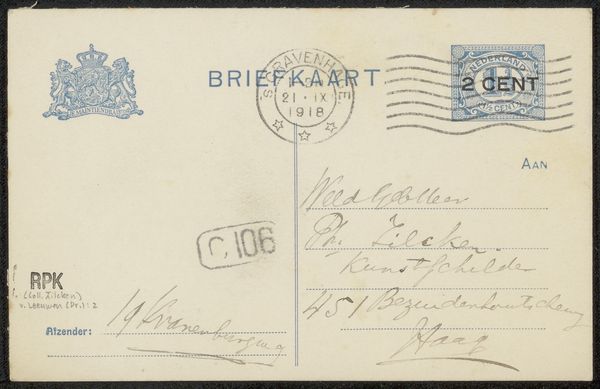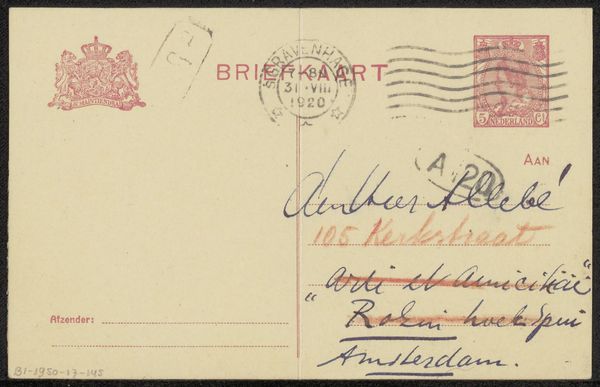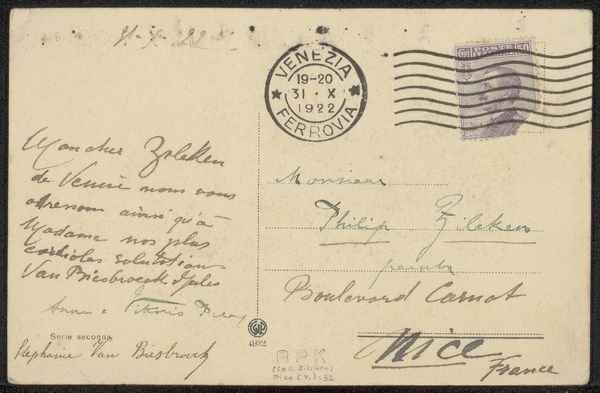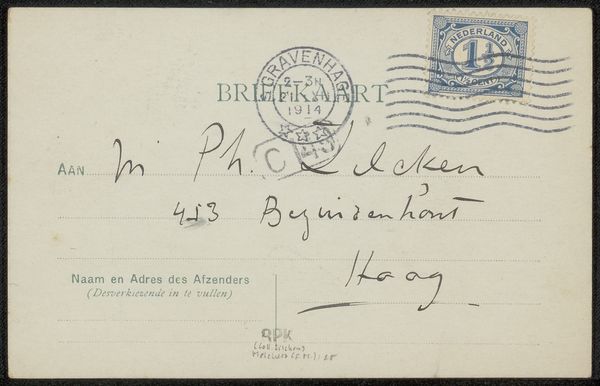
paper, ink, pen
#
comic strip sketch
#
imaginative character sketch
#
quirky sketch
#
pen sketch
#
paper
#
personal sketchbook
#
ink
#
ink drawing experimentation
#
pen-ink sketch
#
sketchbook drawing
#
pen
#
storyboard and sketchbook work
#
sketchbook art
#
calligraphy
Copyright: Rijks Museum: Open Domain
Editor: This is "Briefkaart aan Philip Zilcken," made before 1917 by F.M. Melchers, using pen and ink on paper. It’s just the back of a postcard, really, with handwriting and stamps. It feels quite personal, like a glimpse into a private communication. What strikes you about it? Curator: This postcard, seemingly insignificant, offers a powerful intersectional lens. The handwritten address, the stamp – these elements speak to a specific historical moment, likely during or shortly after the First World War. Consider the impact of global conflict on personal lives. Do you think the act of sending a handwritten note takes on a different meaning in such times? Editor: Definitely. The simple act of communication becomes so much more valuable. Curator: Precisely. Moreover, the handwriting itself tells a story. Calligraphy, as a skill, was gendered and classed. Whose hand is it? What can the style tell us about their education, their social standing, perhaps even their gender expression? The very act of writing and receiving a letter connected people, often despite considerable distances; do you see how this form can empower individuals? Editor: That makes me see the postcard differently, almost as an assertion of connection. Curator: Yes! Everyday ephemera such as postcards give us glimpses into personal identity and lived experiences within larger socio-political landscapes. The mundane details – the ink, paper quality, even the stamp – are material signifiers deeply entwined with class, access, and cultural context. How do these ‘small’ art forms help us to reconstruct social networks and historical experiences? Editor: It’s fascinating how much history is embedded in what I thought was just a scribbled address. It reveals unexpected layers of connection and resilience. Curator: Indeed. And perhaps inspires us to consider what seemingly trivial traces of our own lives will say to future generations.
Comments
No comments
Be the first to comment and join the conversation on the ultimate creative platform.
